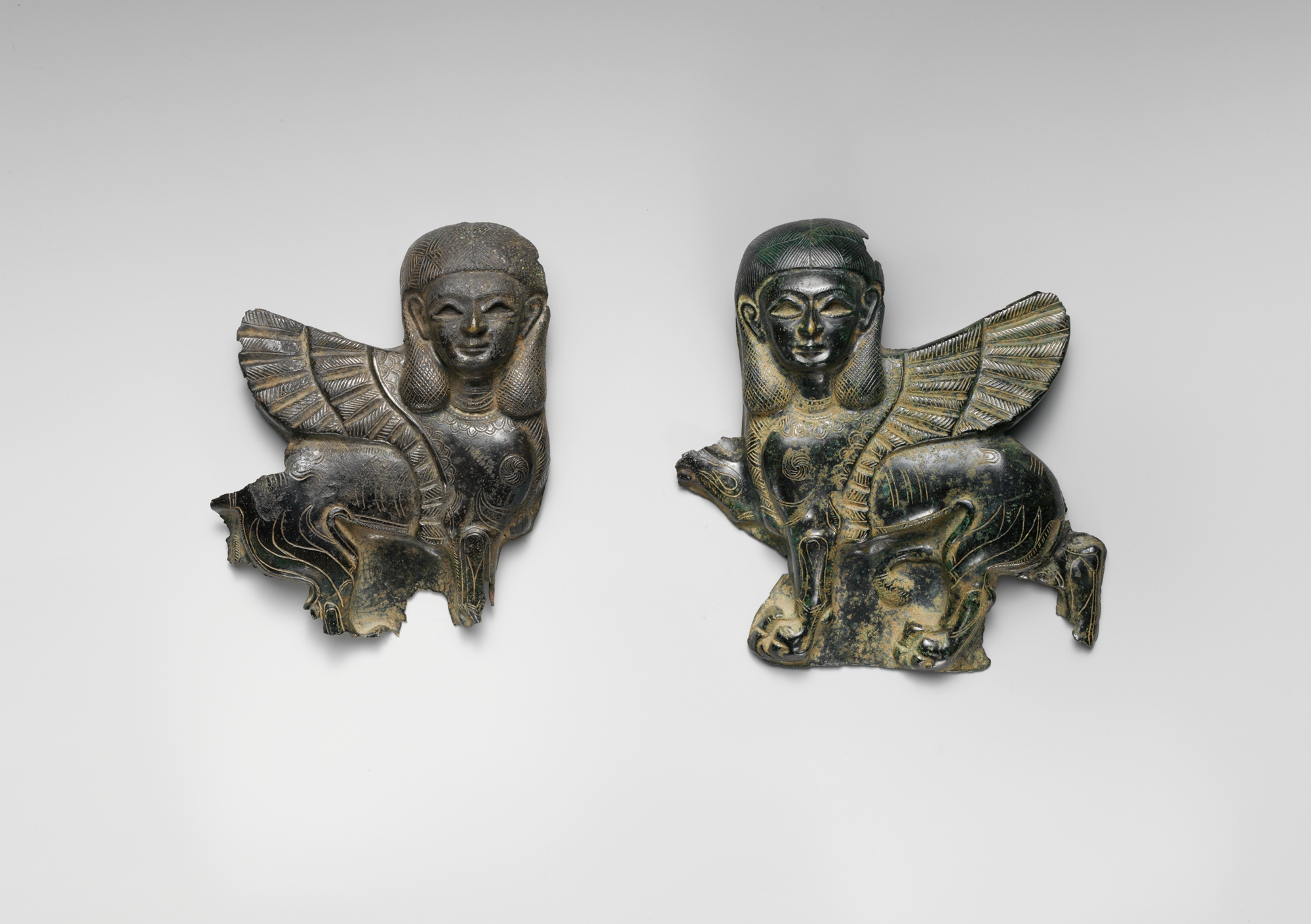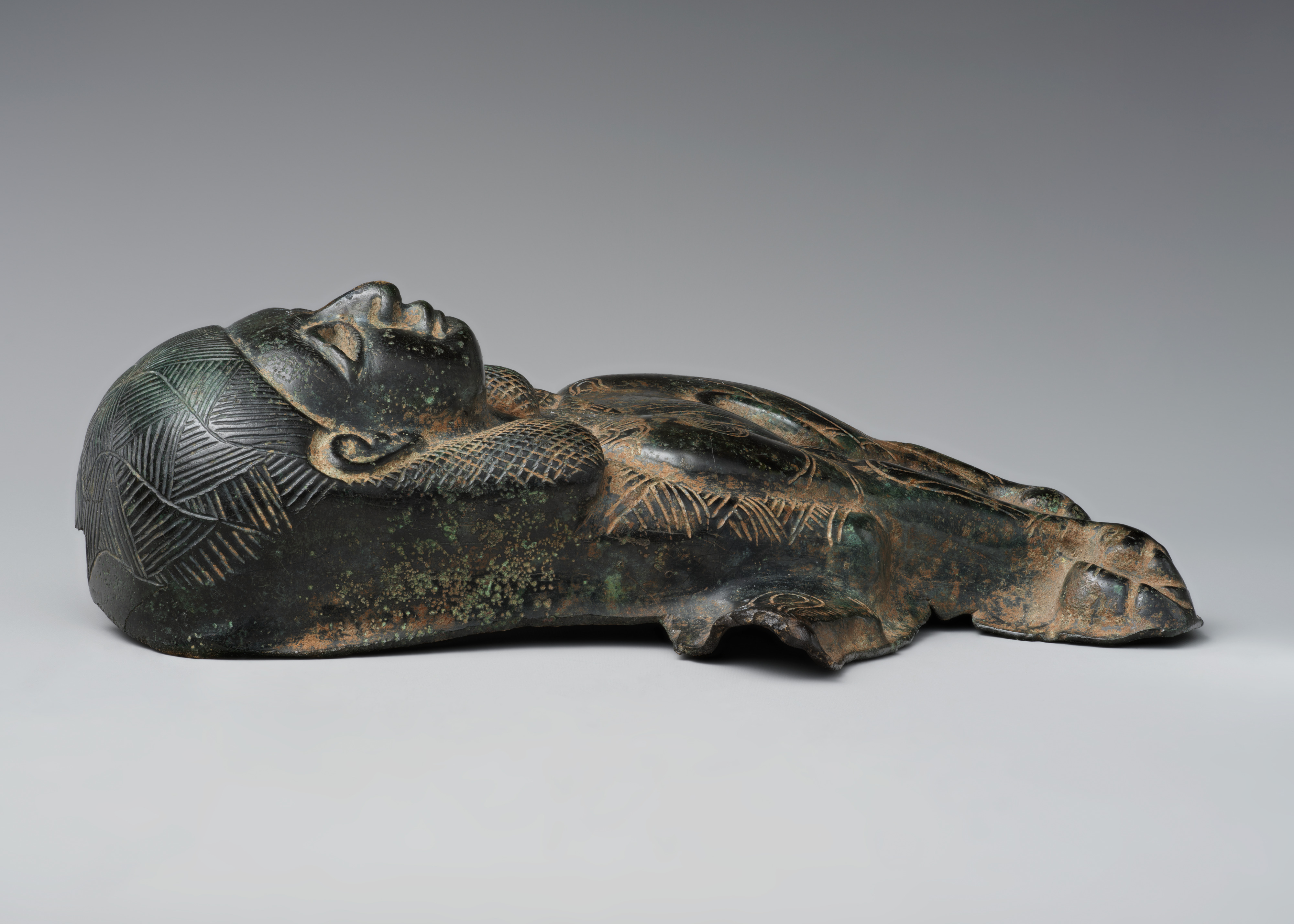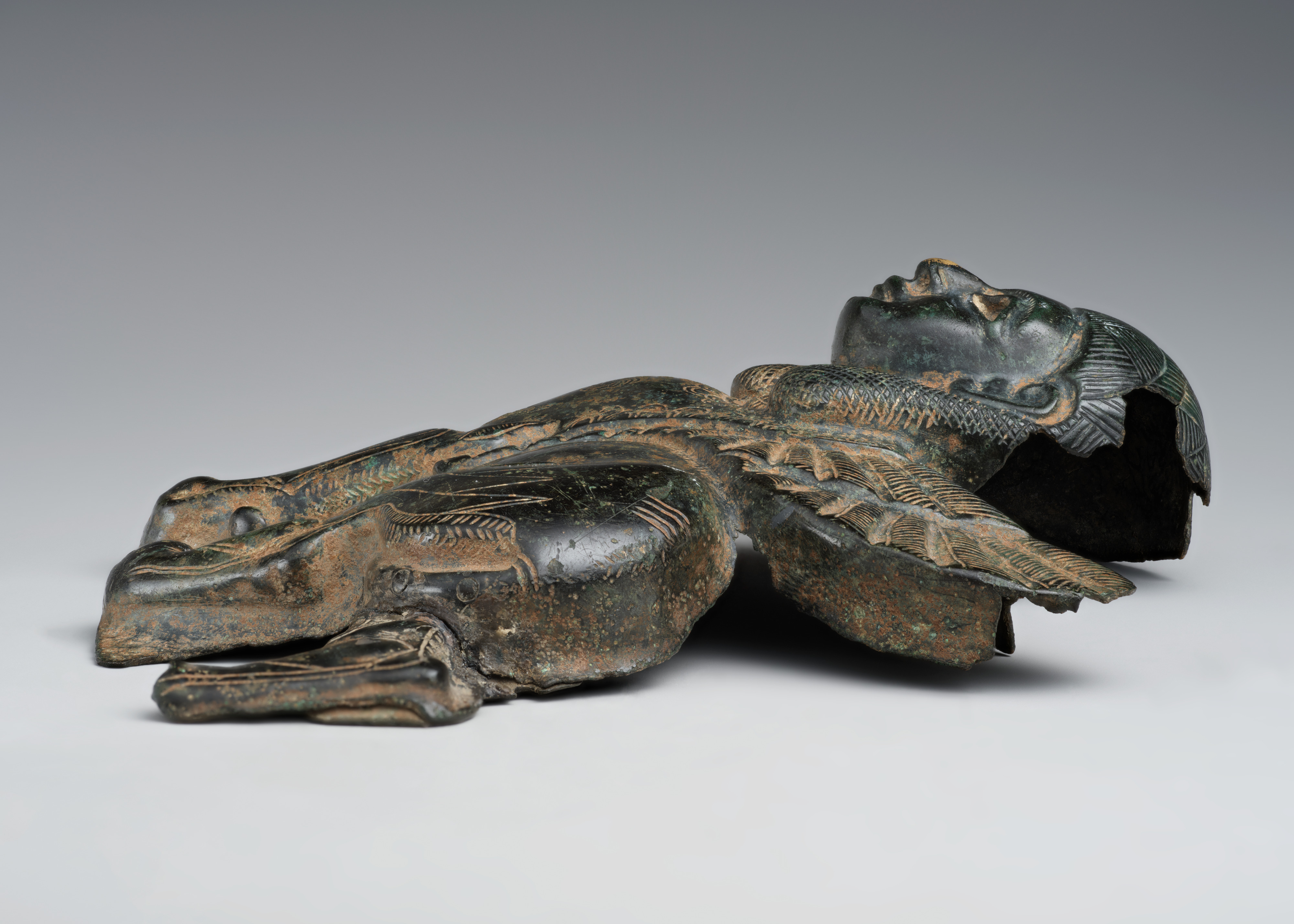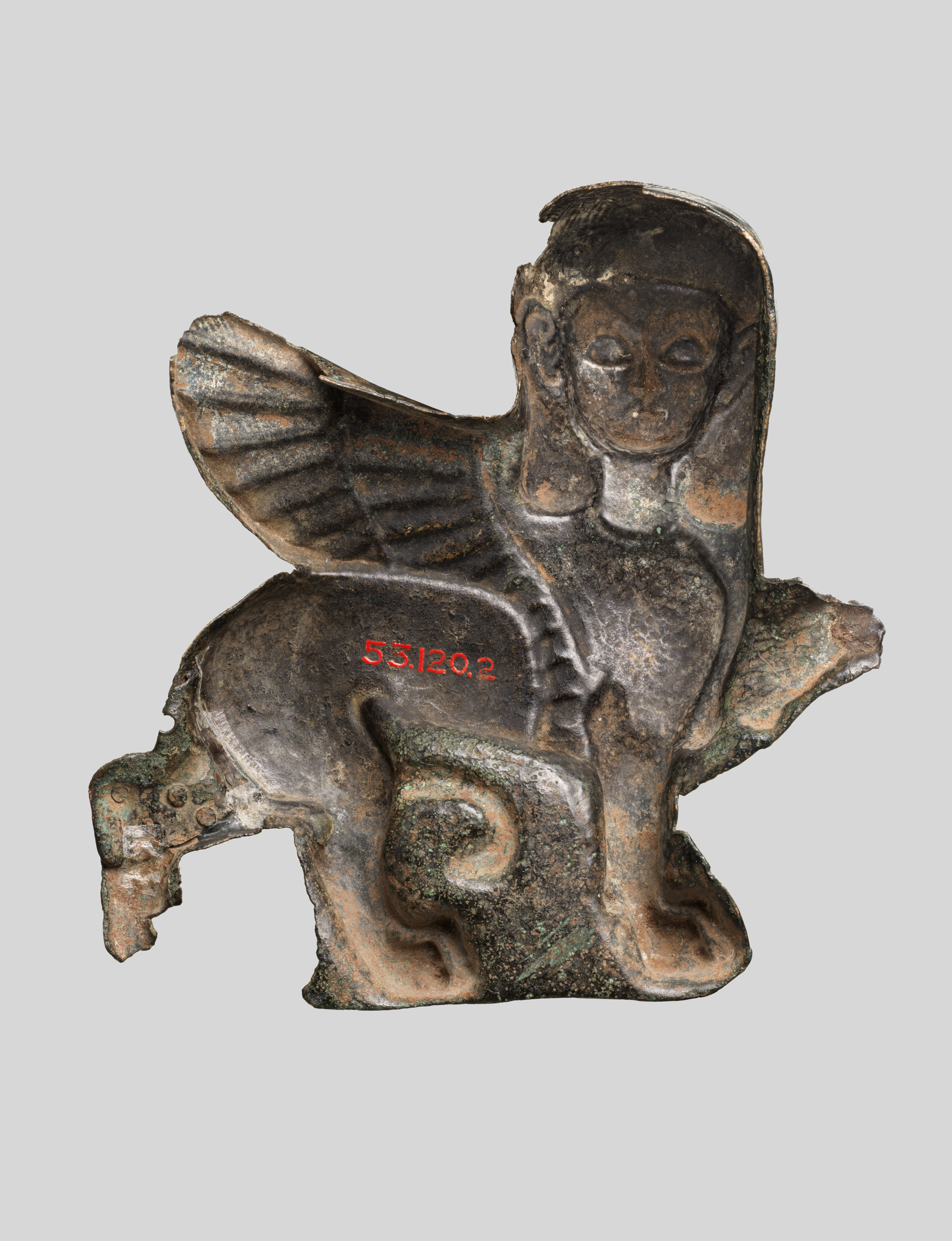Plaque in the form of a sphinx
Not on view
Hammered from single sheets of bronze, these sphinxes look outward toward the viewer. Their striding poses mirror each other and suggest that they may once have been displayed approaching each other. While many of the incised details are the same, differences such as the position of the hair swirl on the chest indicate that two separate craftspeople may have been responsible for the decorative work. The supernatural character of the sphinx, a composite creature with the head of a human and the body of a lion, is an ancient royal symbol of Egypt. Here the sphinx is further enhanced with the addition of wings, an ancient Near Eastern innovation.
The Levant and inland Syria were conquered in the eighth century B.C. by the Assyrian kings. Luxury goods, including metal and carved ivory objects, were produced by skilled Syrian and Phoenician craftspeople and came as tribute and booty to the Assyrian capitals. These works in bronze share certain features with ivories of the same period, both of which were used to decorate palace furnishings. The stance and facial features of the sphinxes as well as the rendering of musculature represented by the flamelike pattern on the hind leg are also found on ivories. Large furniture pieces, doors, and screens made of a rich variety of materials such as ivory, wood, and metalwork outfitted Assyrian palaces, where they would have greatly enhanced the impression of dazzling grandeur. Whatever their exact use, these plaques are examples of the finest north Syrian bronzes known from the first millennium B.C.
Adapted from, Art of the Ancient Near East: A Resource for Educators (2010)
This image cannot be enlarged, viewed at full screen, or downloaded.
This artwork is meant to be viewed from right to left. Scroll left to view more.






